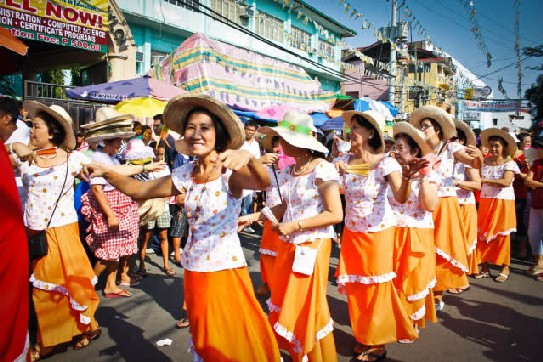The Famous Obando Bulacan Fertility Rites
Posted By philippine evolution staff on July 10, 2013

philippine-evolution.com
OBANDO FERTILITY RITES
The Obando Fertility Rites is a festival wherein devotees and tourists dance in the streets in the form of a religious procession with the intent of bearing a child. Most participants of the fertility rites ask and pray to the patron saints for a child, a partner in life or good fortune. The festival is celebrated yearly during the 17th, 18th and 19th of May.
The Obando Fertility Rites is an annual three day festival celebrated in the Municipality of Obando in the Province of Bulacan.
The Obando Fertility rites is a Filipino Dance ritual. This festival dates back even before the Spanish Era. It was then called the “Kasilonawan” wherein it was headed by the “katalonan” or the high priestess. This ancient fertility ritual was very important to the early Filipinos because a woman’s fertility is equal to her worth. A Pagan God named Linga was the center of the Kasilonawan.
When the Franciscan missionaries arrived in the Philippines, they built churches and introduced Catholic Saints to the Filipinos to propagate Christianity. They introduced the trio, Sta. Clara, San Pascual and Nuestra Senora de Salambao to Obando, in hopes to substitute their traditional Pagan Gods.
During the World War II, the fertility rites came to a halt because of the damage done to the town of Obando and its church. After Obando was rehabilitated, , the Archbishop of Manila and the Obando Parish priest banned the Obando Fertility Rites from being celebrated due to its pagan origin. Though it was forbidden, it was still practiced but discreetly. It was in 1972 when Rev. Fr. Rome R. Fernandez and the Commission on Culture of Obando revived the tradition which still continues to this day.
During the festival, the streets fill with couples praying and wishing for children, people asking for a husband or a wife and good fortune. Festival-goers dance on the streets in an enormous procession followed by the image of the three patron saints. While dancing in the procession, the festival-goers sing the song “Santa Clarang Pinung-pino” as they participate in the rites. During the three days of the festival, the procession would be lead by the image of the particular Patron Saint of the day.








Comments